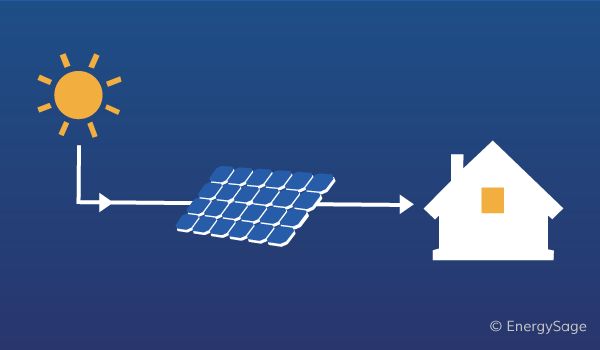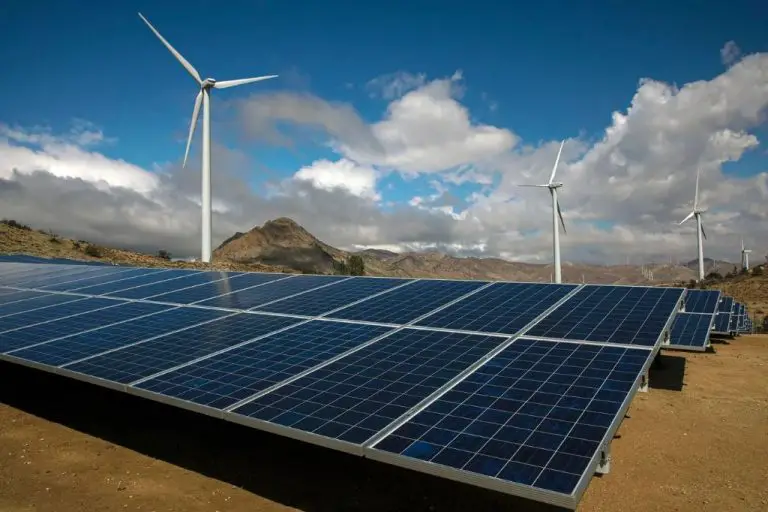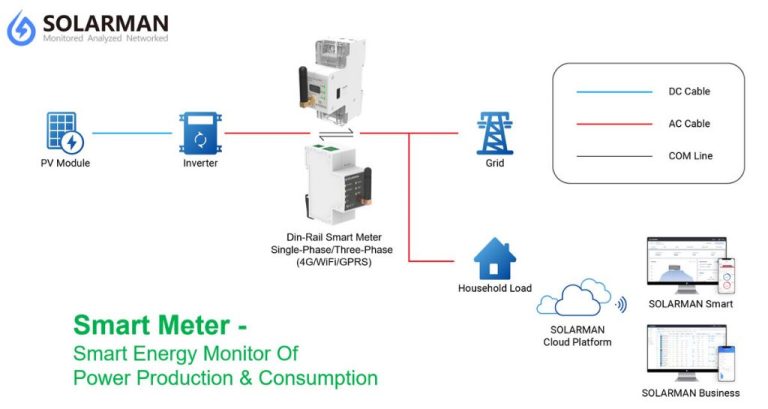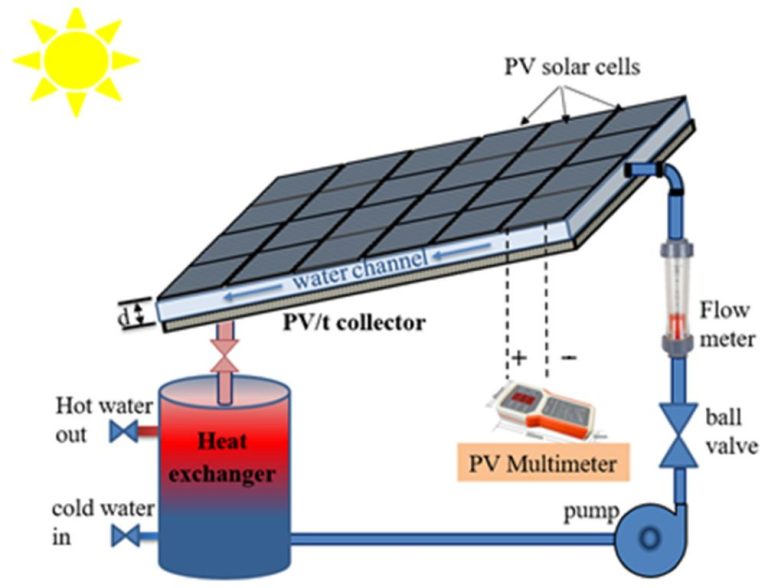How Is Solar Energy Converted Into Electricity?

Solar energy is the radiant light and heat from the sun harnessed using various technologies such as solar heating, photovoltaics, and solar thermal energy. It’s an abundant, renewable source of energy that can help reduce our reliance on fossil fuels. According to the IEA, solar PV generation increased to 1,300 TWh in 2022, up 26% from the previous year. With prices declining and efficiency improving, solar is one of the fastest growing renewable energy sources worldwide.
The conversion of solar energy into electricity happens through the photovoltaic effect. When sunlight hits certain materials like silicon, the photons of light excite the electrons in the material, causing them to break free from their atoms. This generates a flow of electricity that can be captured and converted into usable power through solar cells and panels. Understanding how this conversion process works is key to harnessing solar energy.
How Solar Panels Work
Solar panels work through the photovoltaic effect, which is a process that generates voltage or electric current when a material is exposed to light. Solar panels are made of semiconductors such as silicon that have characteristics of both conductors and insulators. When sunlight hits the solar panel, the photons are absorbed by the semiconductor material, causing electrons to break free from their atoms. This generates electron-hole pairs that are attracted to opposite charges, creating a current through an external circuit (IOP, n.d.).
The basic building block of a solar panel is the photovoltaic cell. PV cells contain one or more semiconductor layers with a p-n junction that separates the positive and negative semiconductor layers. When sunlight strikes the cell, the photons are absorbed into the semiconductor layers, knocking electrons free. The built-in field of the p-n junction provides directionality for the electron flow, resulting in a current. PV cells are wired together in series strings into larger units called modules or solar panels (Pick My Solar, 2019).
Solar Irradiance
Solar irradiance refers to the amount of energy from the sun that reaches the earth’s surface. The sun produces an enormous amount of energy, approximately 430 quintillion Joules per hour, according to the U.S. Department of Energy.1 However, only a tiny fraction of that energy is intercepted by the earth. NASA estimates that the amount of solar energy the earth receives per year is about 1.2×1014 kilowatt-hours.2
The amount of solar irradiance that reaches a given location on earth depends on factors like time of day, season, weather conditions, and latitude. Areas near the equator receive more direct sunlight than polar regions. The solar spectrum also varies based on atmospheric conditions, with certain wavelengths being absorbed or scattered more than others.
For solar power generation, sunlight with wavelengths in the visible and infrared range are the most useful, as these are absorbed by photovoltaic cells to generate electricity. Solar irradiance directly impacts how much electricity can be produced. More intense sunlight will result in higher solar cell efficiency and greater energy output. Understanding the solar resource available at a site is crucial for properly sizing and installing PV systems.
PV Cell Circuitry
Photovoltaic cells are wired together into PV modules, which are then connected into PV arrays. Wiring the cells together increases the voltage and current output to usable levels. Individual PV cells typically produce about 0.5V. By wiring cells in series, the voltages add up while the current remains the same. For example, wiring 36 PV cells in series produces about 18V. Modules typically contain 60, 72, or 96 series connected cells and produce around 12V, 15V or 24V respectively.
PV cells can also be wired in parallel to increase the current. Connecting modules in parallel adds the currents together while maintaining the same voltage. Large arrays can contain numerous modules in series and parallel to produce enough power for residential and commercial applications. Proper wiring is critical for efficiency and safety. Open circuit and short circuit faults can develop over time, which reduce power output. Following electrical codes and manufacturers’ specifications ensures robust connections, sufficient wire gauging for current flows, and safe installation.
Key aspects of PV cell circuitry include:[1]
- Cell configuration into modules in series and parallel
- Module configuration into arrays in series and parallel
- Wire gauging and connections
- Safety and prevention of faults
Inverters
An inverter is a crucial component of any solar energy system that converts the variable direct current (DC) output from solar panels into alternating current (AC) that can be used to power homes and connect to the utility grid (Source 1). There are two main types of inverters used in solar systems:
String inverters – These are the most common type of inverter used in residential solar arrays. They take the DC output from multiple solar panels wired in series (called a ‘string’) and convert it into AC power. String inverters are simple, reliable, and cost-effective.
Microinverters – Rather than handling an entire string of solar panels, microinverters are small devices installed on each individual panel to convert its DC output to AC. This allows for panel-level monitoring and optimization. Microinverters are more expensive but can maximize energy production.
The inverter plays a key role in synchronizing the solar array’s variable AC output with the fixed frequency and voltage of the electricity grid. Advanced inverters can provide reactive power support, voltage regulation, and disconnect the system if needed for safety or maintenance (Source 2). High quality inverters are critical for efficient, safe, and reliable solar energy systems.
Batteries
Batteries allow solar panel systems to store excess electricity generated during the day for use at night or when solar production is low. There are two main types of batteries used in solar systems:
Lead-acid batteries are the most common, inexpensive option. However, they are large, heavy, and only last 3-5 years on average. Lithium-ion batteries are lighter, more efficient, longer-lasting (10+ years), and better suited for frequent charge/discharge cycles. Popular lithium-ion options for solar include Tesla Powerwall and sonnen batteries.
When selecting a battery, key factors include capacity, depth of discharge, cycle life, efficiency, and cost. Batteries increase upfront system costs but allow for time-shifting solar production for peak use periods. Battery storage enables solar homes to operate off-grid or maintain essential loads during grid outages.
Mounting Systems
Solar panels need to be mounted securely to maximize solar energy production. There are two main types of solar panel mounting systems: fixed mount and tracking systems (source).
Fixed mount systems hold solar panels in a fixed orientation. The panels are tilted at an optimal angle towards the sun to maximize energy production throughout the year. Fixed mounts are usually sturdier and require less maintenance than tracking systems. They utilize mounting rails, clamps, and brackets to secure solar panels to rooftops or ground mounts (source).
Tracking systems move solar panels to follow the sun’s path across the sky, keeping the panels optimally oriented throughout the day. Single-axis trackers tilt panels along one axis, following the sun east to west. Dual-axis trackers follow the sun’s movement in multiple directions. Tracking systems can increase solar energy production by 25-30% compared to fixed mounts. However, they have higher costs for equipment and maintenance (source).
Grid-tie vs Off-Grid
There are some key differences between grid-tied and off-grid solar systems:
Grid-tied systems are connected to the electrical grid, allowing any excess solar energy produced to be exported back to the grid. This enables net metering, where the homeowner receives credit or payment for the excess energy. Grid-tied systems don’t require batteries for energy storage since they can pull from the grid when solar production is low. However, grid-tied systems won’t work during utility power outages unless paired with an additional battery backup system (https://unboundsolar.com/blog/off-grid-solar-pros-and-cons).
Off-grid systems operate independently from the grid and must supply a home’s full energy needs. They require batteries to store excess solar energy for use at night or on cloudy days. Off-grid systems provide complete energy independence and work during grid failures, but battery costs make them more expensive. Homeowners with off-grid systems can’t take advantage of net metering incentives (https://www.solarfeeds.com/mag/pros-and-cons-of-off-grid-solar-systems/).
In summary, grid-tied systems are generally cheaper and easier to install but provide less energy resilience. Off-grid systems require more equipment but can operate independently to provide full energy needs.
Net Metering
Net metering is an electricity billing mechanism that credits solar energy system owners for the electricity they add to the grid. It allows homeowners with solar panels to export excess electricity to the grid and reduce their overall electricity consumption from the utility provider. The homeowner only pays the utility for their “net” energy use, essentially using the grid as a battery to store solar power not immediately used (1).
As of 2022, 41 states and Washington D.C. have mandatory net metering rules, while 6 states have voluntary net metering policies. Only 3 states – Alabama, Mississippi, and South Dakota – do not have statewide net metering rules (2). Some states like California, Hawaii, and Indiana are transitioning to new compensation structures as solar adoption increases (3).
Net metering enables wider adoption of rooftop solar by eliminating prohibitive costs of battery storage. However, utilities have pushed back on net metering policies, arguing that solar customers don’t pay their fair share for grid maintenance. As more homeowners go solar, net metering reform continues to be a hotly debated policy issue across the U.S.
(1) https://www.solar.com/learn/what-is-net-energy-metering/
(2) https://en.wikipedia.org/wiki/Net_metering_in_the_United_States
(3) https://www.solarpowerworldonline.com/2020/03/which-states-offer-net-metering/
Conclusion
In summary, solar energy is converted into electricity through solar photovoltaic panels which absorb photons from sunlight and convert them into an electric current using semiconductors. The solar irradiance that reaches the panels generates electricity through the PV cell circuitry in a process called the photovoltaic effect. Inverters and batteries can store and regulate the electrical output. Solar panels can be set up for grid-tied systems with net metering or for off-grid systems. Overall, solar energy has immense potential as a renewable source of electricity generation with solar capacity continuing to expand exponentially each year, making up an increasing share of global energy production. The future is bright for solar to play a major role in building a sustainable energy system and mitigating climate change.





